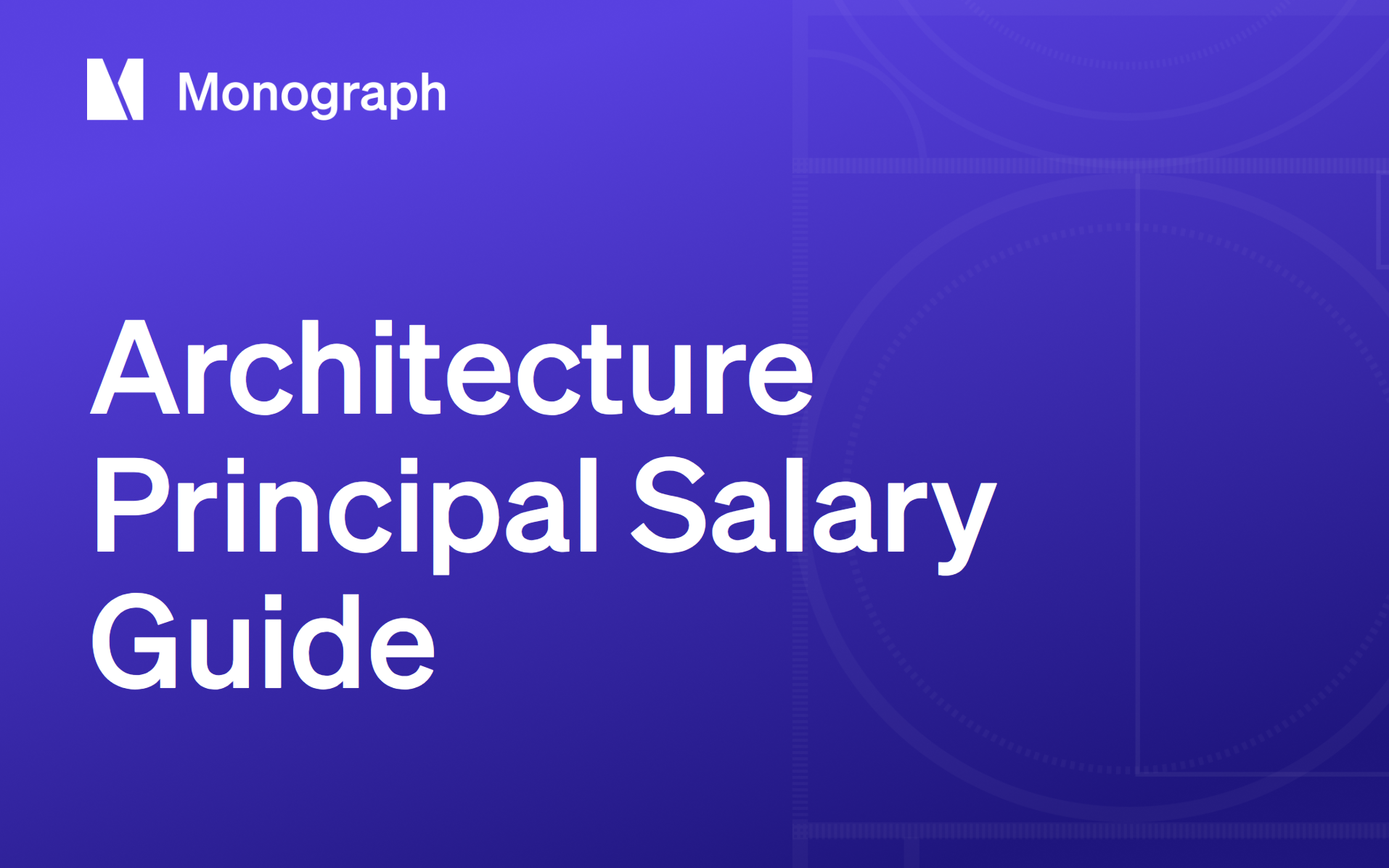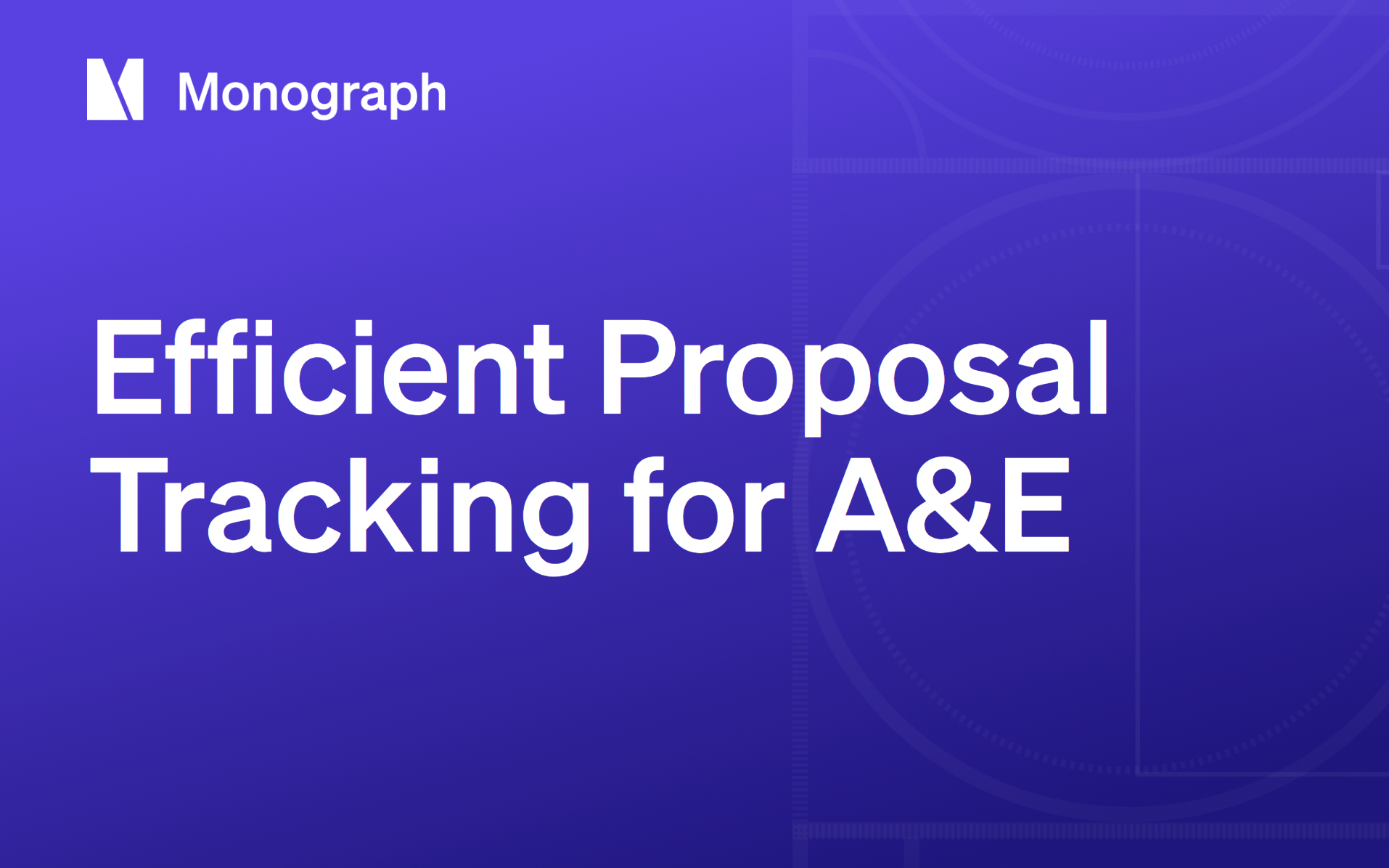Contents
If you're running an A&E practice in 2025, architecture principals earn between $140,000 and over $200,000 nationally, with recent data from major salary aggregators like ZipRecruiter and VelvetJobs reporting these figures. That $45,000 gap isn't random. It reflects how regional markets, project demand, and firm size shape compensation. A principal in San Francisco or Boston easily clears the upper bound, while someone in a smaller market might hover near the floor.
These numbers matter because labor costs eat up more than half of most project budgets. Principal compensation affects everything from profitability to whether your best people stay or walk to competitors. Getting pay right gives you solid ground for fee negotiations and growth planning. We'll break down regional differences, experience levels, firm size impacts, and other factors that drive principal salaries so you can benchmark with confidence.
Fast 2025 Salary Snapshot
The current market data reveals a compelling story about architecture principal compensation. VelvetJobs tracks the more common 'Principal Architect' title at $155,000 annually, or roughly $91 per hour, while ZipRecruiter shows significantly higher average salaries for similar roles, around $171,000 annually. That's not a mistake in the data. It's proof that how you title and frame a position changes everything about compensation expectations.
The distribution shows why smart principals negotiate hard and why you need to know where you stand. The bottom quartile ranges from $110,000 to $125,000. The median sits between $109,393 and $155,000. Hit the 75th percentile and you're looking at $125,000 to $194,500. Top performers in the 90th percentile earn $156,000 to $221,000, depending on market and specialization.
These figures reflect modest growth from last year: enough to match inflation but not enough to ignore regional premiums that can swing your actual earning power by 25% or more. Understanding where your title, location, and ownership stake map against these ranges becomes crucial for defending raises or making competitive offers to the talent you need.
Why These Numbers Matter for 2025 Compensation Strategy
Every time you negotiate a new contract or review year-end bonuses, benchmark data sets the tone for your entire firm. When your compensation falls behind these benchmarks, you're asking for trouble. Experienced principals can command as much as $203,700 on VelvetJobs and up to $221,000 in the 90th percentile.
Leaders at that level know their worth and won't think twice about taking a better offer across town. Every departure costs you more than just a recruiter's fee: lost client relationships, delayed projects, and team morale takes a hit when respected leaders walk out.
Overpaying hurts just as much. Labor is your biggest project expense, so even a five-percent drift above market rates can kill the thin margins that keep your doors open. Tracking salary data isn't busy work: it's what separates firms that grow from those that slowly bleed out.
Staying current with these benchmarks gives you solid ground to stand on. When junior staff push for raises or partners debate profit-sharing, you can point to the same public data they're reading. Aligning principal compensation with credible market data shows lenders, investors, and future partners that you run a disciplined practice.
The competition is real. Major metros pay 25-40% more than smaller markets, and cities like San Jose report averages above $300k according to Monograph's 2025 guide. That premium shrinks the national talent pool and makes every qualified principal a hot commodity. Stay on top of the numbers and act on them, or you'll be watching good people leave for firms that do.
National 2025 Averages & Percentile Breakout
Setting competitive compensation requires understanding where the market actually sits. The two largest public datasets tell different parts of the story: ZipRecruiter captures small- to mid-size practices, while VelvetJobs focuses on larger firms and executive searches. Here's what the data reveals:
*Total cash includes base plus bonuses and profit-sharing that typically add 10-25% for principals in profitable firms. The methodology explains much of the variance: ZipRecruiter's numbers already factor in these incentives, while VelvetJobs lists base salary only.
The hourly breakdown reinforces this difference. ZipRecruiter's median of $52.59/hour sits about 42% below VelvetJobs' $91.00/hour. Self-reported job ads versus recruiter placements create different pictures entirely.
Architectural engineers complicate the comparison. In most metro markets, architecture principals tend to earn as much or more than architectural engineering principals, though demand for specialized structural and MEP expertise can influence compensation in certain cases. If your firm competes for cross-disciplinary talent, that premium becomes your baseline.
Two factors determine where you land on this percentile ladder: experience and licensure. Principals with 20+ years who hold active licenses (often with ownership stakes) typically cluster in the 75th percentile or higher. New principals or those building their practice usually start closer to the median, even in expensive markets.
The lesson: don't base compensation decisions on a single survey. Use multiple data points, account for bonuses in your total cash picture, and check regional engineering benchmarks. Your best people will leave for a 5% bump if you're not paying attention.
Regional & Market-Size Variations
Location drives compensation more than almost any other factor. The national average may hover between $150,000 and $190,000, but the same résumé can command 25-40% more, or less, depending on geography. This pattern shows up consistently across every 2025 salary survey, from ZipRecruiter's nationwide dataset to urban-focused studies.
Geographic salary patterns reveal clear regional tiers across the country:
- Northeast metros: New York City and Boston push salaries toward the top due to high living costs and fierce competition for leadership talent
- West Coast premiums: San Francisco and Seattle principals typically earn under $200,000 in base pay
- Tech hub peaks: San Jose principals average more than $310,000, nearly double the national norm
These coastal markets set the high bar that influences compensation expectations nationwide.
The Midwest occupies middle ground. Chicago offers solid six-figure compensation, but typical base salaries fall short of coastal highs because operating costs and billing rates remain lower. Travel south to Dallas or Atlanta and the story shifts: ongoing development keeps demand high, but lower living costs keep most salaries in the $150,000-$180,000 range.
Population density adds another pricing layer. Salary reports show firms in metros with one million residents or more pay about 15% above comparable roles in smaller cities. This premium reflects higher fees, larger project scales, and basic supply-and-demand pressure. Step outside the metro ring and the floor drops quickly: rural principals often earn below $110,000, and $110,000-$145,000 is generally above the 25th percentile of national data. Stack those figures against the Bay Area's $310k and the urban-rural gap easily exceeds 40%.
Even within a single state the spread can be dramatic. A principal in Boston suburbs might accept $25,000 less than a downtown peer, trading nominal pay for shorter commutes and lower housing costs. Before you benchmark compensation, or negotiate your own, you need regional context. Without it, you risk under-pricing talent in New York or over-paying relative to market conditions in smaller cities.
Cost-of-Living Adjusted Insights
The headline salary doesn't tell the whole story. A $190,000 offer looks impressive on paper, but its real value changes based on where you live. That's the difference between nominal and real pay: nominal is the raw number; real salary is what that number actually buys once rent, groceries, taxes, and childcare hit your budget.
Consider the Bay Area example. Principals in San Francisco typically earn between $100,000 and $150,000, while those in neighboring San Jose make up to about $197,000. But housing costs run so steep that the purchasing power of a $180,000 package there feels closer to $95,000–$100,000 in Kansas City, where a three-bedroom doesn't cost half your paycheck. A 40% nominal premium disappears when you factor in actual living expenses.
The flip side is the "hidden raise" you get when pay stays steady but your location changes. Principals earning $150,000 in Austin or Cincinnati, markets with cost-of-living indexes near the national average, often keep more discretionary income than peers making $30,000 extra on the coasts. Urban hubs pay 20-30% above rural rates, but the real winner is the city where that bump outpaces living expenses.
This math matters for recruiting. Firms that ignore it risk overpaying in expensive metros or underpaying remote leaders who anchor key projects elsewhere. Plan your compensation around real dollars, not just big numbers, and you'll hold onto top talent without crushing your margins.
Key Pay Drivers in 2025
When you sit across the table to discuss compensation, the number in your offer letter rarely comes down to a single metric. Principal salaries can swing by six figures based on a handful of levers; some you can influence early in your career, others once you're already running projects.
Licensure serves as the first gatekeeper. Unlicensed architects climbing the AXP ladder hover far below principal territory; once you stamp drawings under your own seal, the floor rises sharply. Every data set shows a clear premium for licensed professionals, and at the principal level that credential is non-negotiable.
Experience does the heavy lifting. These key factors shape your compensation potential:
- Years in field: Principals typically bring 15-25 years in the field, and that tenure shows up in the pay bands
- License status: Active professional licensure remains non-negotiable at the principal level
- Business development: Track record of winning new work commands significant premiums
- Technical expertise: Specialized skills in emerging areas like sustainability or healthcare design
The median total for principal architects sits around $153,000, with the 75th percentile reaching approximately $155,000. Those numbers assume you've spent more than a decade winning work, mentoring teams, and keeping projects out of litigation; skills that aren't taught in studio but pay dividends in salary negotiations.
Firm size adds another wrinkle. Large firms pay higher base salaries because they spread overhead across bigger revenue pools. A boutique practice may post a lower salary figure, yet a healthy profit-sharing plan can close the gap, or blow past it, when the books finish in the black. If you own equity, your "salary" becomes only part of the story; owners in growth markets often double their W-2 income once profit distributions hit.
Specialization commands premiums. Healthcare, civic megaprojects, or deep-green design earn 10–15% bumps because clients pay for niche expertise that de-risks billion-dollar assets. Add an advanced degree or a sought-after credential, think façade engineering certificates or a sustainability track record, and you tack on another 5-7%, a bump several salary surveys now bake into their upper quartiles.
Location can overpower every other factor. Principals in San Jose top out near $310,703, almost double the national average. Rural markets pay 25-40% less, even for identical résumés. Hybrid and remote setups soften the extremes, but most firms still peg pay to where the work, and the liability, resides.
Business performance seals the deal. A principal who repeatedly lands new work or rescues troubled projects won't wait long for a raise. Bonuses tied to firm profitability can reach 20-30% of base in good years, eclipsing the predictable 3-4% annual bump many principals expect.
Stack these drivers together and the spread makes sense: $109,393 for an "architecture principal" in a secondary market up to the high-two-hundreds in coastal tech hubs. The takeaway is simple: sharpen the levers you control, licensure, expertise, and business development, and you position yourself to capture the upside when market forces tilt in your favor.
Remote & Hybrid Work Impact
If you're leading a team from your kitchen table instead of a downtown studio, the compensation conversation has shifted. The national figures remain your starting point, but remote and hybrid work means translating those numbers across different markets and cost structures.
The numbers tell the story clearly. Principal-level salaries swing 25-40% between major metros and smaller markets. A principal earning $200,000 in San Francisco, where averages hit $201,918, might see offers around $140,000 for equivalent work in rural markets. That's a 42.9% difference based on current data. Location remains a major factor even when project work happens digitally.
Firms handle this disparity two ways. Some maintain single national rates for principals, giving remote leaders stronger purchasing power in lower-cost areas. Others adjust compensation based on headquarters markets or regional bands, reducing pay when team members relocate to cheaper regions. Either approach demands clear communication; when your team can't understand the reasoning behind pay adjustments, problems follow.
Hybrid schedules create another consideration. When you're on-site twice weekly in New York but working from upstate the rest of the time, you operate in both economies. Most A&E principals negotiate salary against the higher market rate and accept travel costs as part of the arrangement, especially when the role keeps them involved in key project and business decisions.
Remote work hasn't eliminated pay differences; it's highlighted the need for clear, defensible compensation standards. Use urban-rural data as your baseline, document your policy clearly, and review these numbers with each hiring cycle. Without this approach, remote flexibility can become a hidden cost for your firm or limit your own earning potential.
Total Compensation Beyond Base Pay
Base salary only tells part of the story. When you add bonuses, profit distributions, and ownership perks, the numbers shift quickly; and that's what principals actually feel in their bank accounts.
Bonuses make the biggest immediate impact. National surveys show year-end rewards often equal 20% of base pay, reaching roughly $27,000 for principals at the 75th percentile and above. Because those dollars track directly with firm performance, you feel the impact of a busy year immediately.
Profit-sharing follows similar logic. Many principals negotiate a share of net earnings on top of any bonus. While the exact cut varies by partnership agreement, profit distributions are the lever that can push total cash far beyond the headline salary bands reported in standard surveys.
Some firms layer on commission structures, typically tied to new business you originate. High-growth practices may offer competitive incentives to motivate rainmakers, though $20K commissions are not a widely documented standard. If your strength is bringing work through the door, that incentive can eclipse a standard bonus.
Benefits round out the package. Comprehensive medical, dental, and vision coverage remains standard, and the richer the plan, the less personal cash you spend on premiums. Add retirement matching, continuing-education stipends, and paid licensure fees, and the hidden value starts to climb.
Equity sweetens the long game. Roughly one in eight firms now offers stock or phantom-equity programs designed to vest over several years. Combined with traditional buy-in opportunities, ownership can dwarf salary for principals willing to shoulder risk. In highly profitable studios, equity payouts create six-figure windfalls that no salary table captures.
Because every firm mixes these ingredients differently, benchmarking total cash, base, bonus, profit share, commissions, and non-cash benefits is the only way to know whether your offer holds up in the 2025 market. Keep that full picture in view, and you'll negotiate from a position of clarity rather than chasing a single number.
Trendlines & 2026-2028 Outlook
Starting from today's reality, where the national average sits at or above $150,000 for principal-level roles, these numbers will keep climbing. Most firm owners are planning for modest annual increases, typically around 0.5% to 2% through 2028, enough to stay competitive without sacrificing project margins.
Several forces are driving architectural principal salaries upward through 2028:
- Infrastructure investment: Federal and state money keeps flowing, creating steady public-sector work
- AI productivity gains: Automated sheet setup and real-time energy modeling cut production hours while making senior oversight more valuable
- Office retrofit demand: Strong market as clients figure out how to get people back to work
When firms make more money from these trends, principals get paid more.
The challenges are real, too. Healthcare premiums climb faster than inflation, eating into what you can spend on salaries. An economic slowdown would squeeze private development fees and force tighter labor budgets. Better to plan now than react later.
Variable pay is evolving. Firms continue to emphasize guaranteed base salaries for principals, with performance bonuses remaining a supplemental component rather than a dominant factor tied directly to firm profitability. Equity tracks still matter, but expect longer vesting periods designed to keep leaders around for a full business cycle. If your partnership structure hasn't changed since before the pandemic, prepare for higher buy-in requirements and clearer performance expectations.
Build a multi-year pay strategy now. Model three scenarios: steady growth, flat revenue, mild recession, and create salary, bonus, and equity adjustments for each. When market conditions shift, you'll respond with intention instead of scrambling to catch up.
Turning Benchmark Data into Action
You have the numbers; now you need a system for turning them into pay decisions your team can trust. Start by treating salary research like any other project deliverable: it needs regular updates to stay accurate. Set a quarterly reminder to pull fresh data from the AIA survey, BLS tables, PayScale, and job boards. Markets move faster than most A&E firms realize, and stale benchmarks lead to under-market offers that push senior talent toward competitors who pay attention.
Once you have current rates, avoid the spreadsheet trap that most firms fall into. When you model labor costs inside project management tools like Monograph, every salary adjustment ripples through active projects and forecasted budgets in real time. That $10,000 principal raise doesn't just affect one person's paycheck; you instantly see how it impacts every project phase, your backlog, and next quarter's profit margins. Track billable hours against the fees each principal helps win to get objective evidence for raises or bonuses.
This cycle makes pay conversations objective rather than emotional. It's the difference between an annual compensation scramble and a systematic approach that protects both your principals' earning power and the firm's profitability.
Don't guess at salary impacts. Get started with Monograph to see exactly how that $10,000 principal raise affects every project and quarterly forecast.
Frequently Asked Questions
What's the typical bonus percentage for architecture principals in 2025?
Most architecture principals see annual bonuses ranging from 10-25% of their base salary, with the median around 20%. High-performing principals at profitable firms often exceed 25%, especially when tied to business development success and firm-wide profitability metrics.
How much should remote architecture principals expect compared to office-based roles?
Remote principals typically see salary adjustments between 5-15% below major metro rates, though this varies significantly by firm policy. Some companies maintain location-neutral pay scales, while others adjust based on the principal's home market cost of living.
What's the difference between principal compensation at small firms versus large firms?
Large firms (50+ employees) typically offer base salaries 15-25% higher than small firms, but smaller practices often provide more generous profit-sharing opportunities. Total compensation can actually favor small firm principals when equity and profit distributions are factored in.
How long does it typically take to reach principal-level compensation?
Most architects reach principal compensation levels after 12-18 years of experience, including the time needed for licensure, project leadership experience, and business development skills. The timeline can accelerate in high-growth markets or specialized practice areas.





